


A Journey Through Creative Streams of Consciousness




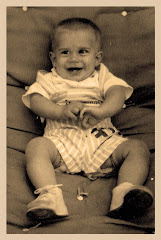
Born in the late 50's, Joseph grew up in Southern California’s surf communities. His love of the water existed long before he could swim. His fond memories of youth and his connection to the ocean are evident in his work. Whether it be art, photography, film, animation, poetry, or music, some of that enduring innocence shines through.
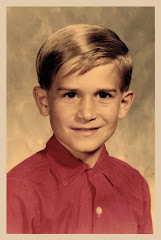
It became quite evident at a very early age that Joseph had inclinations towards the arts. His natural abilities and interests quickly emerged. He spent most of his time drawing. These efforts were always rewarded and encouraged. In addition to ongoing recognition and awards throughout his elementary education, Joseph won first place in a Southern California poster design contest before the age of ten. At the age of ten he also picked up his first guitar and began playing music.
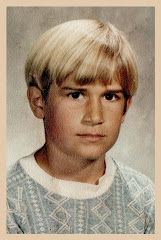
Joseph’s artistic ability continued to evolve and branch out in the following years. In Junior High he won an award for best artist. But in high school he began to studying other mediums like graphic arts, photography, and film. He soon became enamored with the study of motion, and began animating rudimentary surf cartoons.

With the encouragement of his media teacher Kurt Gann, Joseph quickly advanced to cell animation, and began the laborious task of producing a 16mm film with grants secured by his film mentor Frank Pap. Professionals soon took notice and wanted to include his work in a documentary surf film--even before its completion. But being a young perfectionist, he declined the generous offer.

After graduating high school Joseph worked as a freelance airbrush artist, and began his first serious attempts at composing music and poetry. Most of his siblings excelled in music. All received formal training, except for Joseph--he preferred teaching himself. “I wasn’t interested in playing other peoples stuff. I wanted to compose, but I wanted to evolve my own style. I wanted to color outside the lines.” Soon his desires would come to fruition.
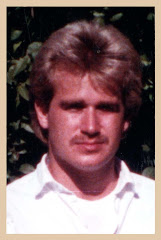
During his college years Joseph continue to explore the arts. While doing his general ed, his art professor once referred to him as the moodiest artist that she ever knew, because each day he would produce a different style. Cubist one day, realism the next, impressionism, abstract, so on and so on. This was a time of great aesthetic discovery. His ability to draw things exactly as they appeared had long been established, but his work in photography had changed his perspective. “If you want it to look real--take a photo. If you want to capture its ethos through the lens of humanity, then you must inject more than what you see.” He referred to these shifting styles as seeing through different filters. “I never knew what filter a model or subject would evoke. It was dictated by something in its essence, filtering through my own consciousness.” Although he was instructed to draw thing as they appeared, his professor attested daily that he had captured the essence. Of course, Joseph got an “A” in the class, but the lure of film remained inescapable.
Ultimately, Joseph pursued a BFA in film production, with a minor emphasis in audio engineering and music composition. In fact, by his second year in college he owned a recording studio. In conjunction with his interest in surfing he began recording a new progressive style of surf tunes, as well as other more technical genres. Ever venturing on the leading edge of technology he rode the birth of modern synthesis, MIDI sequencing, and digital technology. He also worked in live broadcast video productions, and acquired crucial screenwriting skills from his professor Paul Nibley.
During this time Joseph also claims to have found his poetic voice. “One day it just began to flow out of me like taking dictation. In the past I labored to give birth to words, strained at profundity, and fumbled with eloquence. All of a sudden it was different--these were my words, my voice, my authentic expression. Its organic nature evoked my own wonderment. I don’t know what broke loose that day, but from that day on neither complexity nor simplicity mattered--only honesty.”

During his senior year Joseph composed four film scores, and produced 2 films (one of them being the animated short he had started in High School). By the time he graduated, his accomplishments included awards for: Best Film student of the Year, Best Film Score, and Best Director. His senior project went on to win Best Film, Best Editing, Best Actor, and was even a finalist at the Academy Awards student division. His professional internships included Sundance Film Makers Workshop wherein he was put in charge of Art Direction. He was also paid for working on industrial videos for his professor’s production company. In addition, he was hired by his audio engineering professor/mentor Jim Anglsey to record live orchestras in an upscale recording studio. Finally, he went on to work for Disney / Touchstone in Burbank, California.

Joseph’s experience in Hollywood opened his eyes to many things. First was the business side of the industry. While he found the nuts and bolts of the business interesting, he was stunned at the lack of aesthetic understanding. “Executives could read graphs and pie charts with ease, but put a script in front of them and they couldn’t tell a stinker from a masterpiece.” The second reality which gripped him were the work hours. Twelve to fifteen hour days, six to seven days a week was fairly common. Herein, he realized that a normal family life was virtually impossible. Many professionals left for work before their children awoke and returned home after they went to sleep. Hence, a year long film shoot meant that you virtually missed out on a year of family life. This was a tradeoff that he was unwilling to make. Though every desire and opportunity had opened up to him, he turned his back on Hollywood and walked away from the industry which he loved so much.

During this time Joseph also purchased a new Chameleon airbrush and explored a new painting technique which he called Organic Flow. Herein he preferred to use natural forces like gravity, water, drying, and wind to spread paint on the canvas rather than using brush strokes. He explains, “This technique produces a very natural quality. I can guide the paint, but I cannot force it. It goes where it wants, often contrary to my coaxing. But that is the way of nature. The gnarled tree branch has it’s own agenda. Likewise, clouds, water, and rock formations have their own random qualities. When we set colors free on the canvas, we mimic the style of the Creator, whose works cannot be improved upon.”

Joseph’s skill as a guitarist also reached a zenith during this period. “I could play pretty much anything I wanted. So the question was, what did I want to play? Herein the nature of my compositions actually took a turn towards the more simplistic. I had every color on my pallet--I didn’t need to prove anything to myself, so I simply enjoyed myself. This is when every artist does their best work.”

After leaving Hollywood Joseph went back to his recording studio and became involved in multiple facets of the music industry, including sales, marketing, production, large venue installs, etc. “I’ve been involve in one way or another with virtually every major technical innovation in the pro audio industry. These past few decades have been incredible." Over the years Joseph helped produce CD’s for budding artists and signed professionals. During this period he also became deeply involved in Multimedia computer technology, always venturing on the cusp of new innovation. He continued to hone his artistic and technical skills--mastering programs like Photoshop, Painter, and many others. He also followed his love of animation into the realm of 3D computer animation, all the while keeping tabs on the development of computer based film and video technologies--patiently waiting for it to fully come of age.

In accordance with his desire to put family first, Joseph started his own company and began working from home. This allowed him to be with his family around the clock and watch his children grow. “I got to witness every first: their first steps, their first words, their first works of art, their first books, their first day at school, their first pedal on a bike, their first swim strokes, their first ride on a wave, etc. These experiences were irreplaceable. It was then that I realized that I lived inside a transcendent work of art--that in serving life more than craft, I had discovered a living medium.”
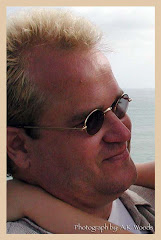
During the next decade Joseph began producing a series of surf motifs that merged digital photography, painting techniques, and 3D computer modeling. Many featured his children in harmony with the ocean. He also dedicated a major portion of his time and interests into studying and writing philosophical works which he called the Mirror Mirror Series. Herein he coined the term Soul Art. “Soul Art represents the highest form of creation in the universe. Indeed, no other medium is more beautiful than the canvas of the heart--for love exists in no other stratum.” Thus far he has completed seven books in his Mirror Mirror series, and assures that many more books are to come. These he wrote under the pseudonym Namlha H. Pesoj. They are replete with poetry, stories, and illustrations.

At the age of fifty things seemed to come full circle for Joseph, when he was invited to help a small but talented production company produce a short film called Wally Bally, which he wrote and directed. He also lent his hand in providing the 2D animation, as well as composing and producing the film score. With the advent of the Red One Camera, he realized that Digital Film Production had come of age, and is more than eager to ride the wave. “I love film, because it is a fusion of all mediums. It always challenges me and thereby draws my interest.”
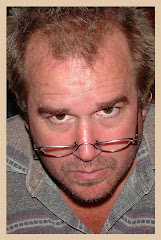
Joseph continues to have his fingers in many pies: art, music, photo manipulation, film, video, animation, and writing. “I am excited to see what comes next. I love to be challenged. Creativity is as fundamental to me as the air that I breathe. The medium doesn’t matter. Just to stand in that place between imagination and reality is a rare privilege. To set mind free and watch dreams materialize brings incalculable joy.”
January 2014: Working on rewrites, edits, and addendums for Mirror Mirror Series books.
December 2013: Worked on Mirror Mirror book series.
November 2013: Worked legal briefs
October 2013: Worked legal briefs
September 2013: Worked legal briefs. Completed the poem: Frayed
August 2013: Worked legal briefs
July 2013: Worked on Mirror Mirror book series: edits & addendums.
June 2013: Completed poems: The Ink Blot Prophecies and The Oak and the Vine.
May 2013: Worked on Mirror Mirror book series: edits & addendums.
April 2013: Worked on surf motif calendar.
March 2013: Completed several poems: Keys of the Kingdom, Ripple Effect, Will Will Will, All Things Equal, That Would be Heaven, Blinded, Vessels, No Relation, & Supernal Summation.
February 2013: Finished College art work layout. Wrote several poems: Super Natural, Personal Limits, The Pious Deist, Virtue Vise, High Genus, The Gathering, & The Blame Game.
January 2013: Worked on treatise "Proof of the Divine". More than double profits in sales at Performance Audio in 2012 (120%+ up from 2011).
December 2012: Wrote several poems: The Parrot, Right and Wrong, Since When, Sire, Origin, The Pebble, The Forest and the Tree, Seed Saw, The Alpha, The All, Nonsense, & Potentials.
November 2012: Wrote "Fallow Heart" and created BlueShift logo.
October 2012: Finished surf motif "Native".
September 2012: Worked on surf motif calendar.
August 2012: Wrote the poem: Selective Empathy.
July 2012: Wrote the poem: No Room for Giants.
June 2012: Worked on surf motif calendar.
May 2012: Worked on surf motif calendar.
April 2012: Scanned old college art and began restoration.
March 2012: Worked on surf motif calendar.
February 2012: Worked on surf motif calendar.
January 2012: Worked on assembling ibooks, surf motif calendar, and novel.
Good post and I must agree that users are getting less and less patient. And we all know that the more graphic intense the site is, the longer it takes to load.
ReplyDeletemobile apps development